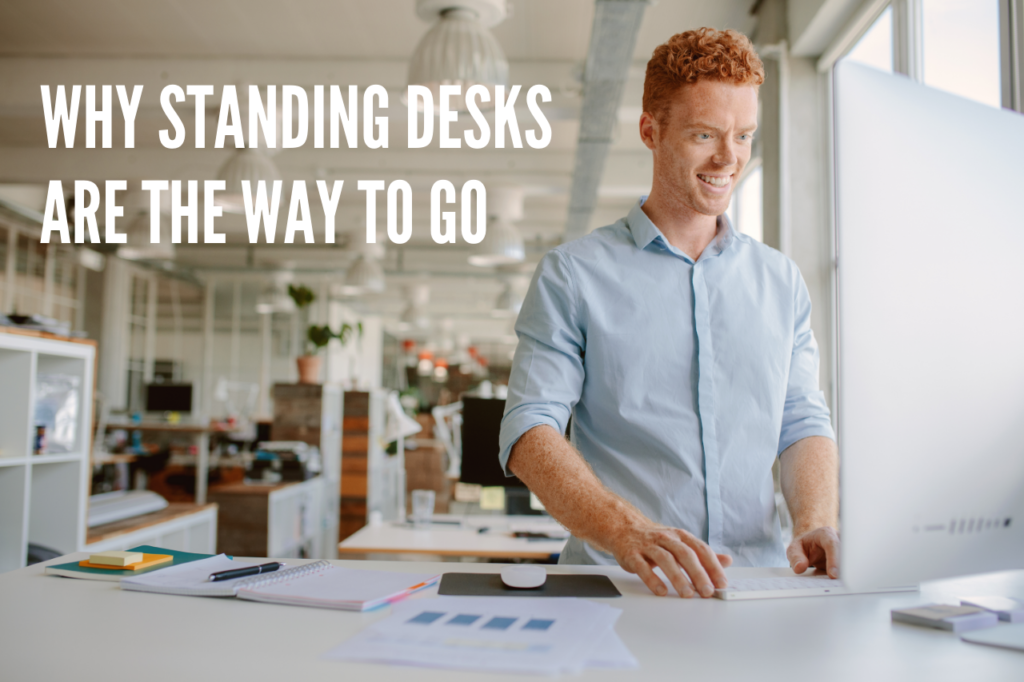To stand or not to stand. That is the question.
In the workplace, standing desks aren’t the norm, but they are becoming increasingly more popular for people tired of sitting all day and seeking a way to keep their mind and body active.
CapeSpace member Ashlee Wilhite has long been a fan, especially because it keeps her energized and boosts her productivity. “In the afternoon it gives me more energy, and I’m able to stay focused on the tasks I need to get done,” she said. “When I sit all day, I sometimes find at three o’clock my brain is zapped and I’m kind of done for the day.”
Ashlee, who is currently the Director of Digital at Allegiance Fundraising, was first introduced to standing desks in 2017 at her previous job at IFAW.
That made her a convert. “I love standing desks,” she said proudly. She is so passionate about them she even bought one for her home.
“I had back surgery when I was 16 and I’m 37 now. That was 20 years ago I had surgery and I started to really feel it in my back,” Ashlee said. “I had talked to a few coworkers at IFAW and asked if I could get a standing desk. It made a huge difference. Ever since then, it not only helps me stay productive, it helps my back so I don’t get stiff throughout the day.”
Sitting All Day Increases Health Risks
Research has shown that sitting for long periods has been linked to a number of serious health conditions including diabetes, heart disease, obesity, and metabolic syndrome. It’s why a growing number of people are moving to the alternative – standing desks.
Ashlee is currently looking at options that can fit into the design of her dedicated desk at CapeSpace Mashpee. The biggest obstacle is the size; standing desks are much bigger than the more traditional ones that have long been used in offices.
She acknowledged that is often the biggest hurdle for someone considering switching to a standing desk. There are a variety of sizes that can fit into different spaces, whether it’s for individuals working remotely in a smaller apartment or for someone working in a large office space who has multiple screens.
Her desk at home has enough space to mount two 20-inch monitors. When she stands, they are at eye level, which is another factor to consider. “Make sure it fits your height,” she said. “I’m tall. I’m 5’10”, and some standing desks I felt like I slouched down. Mine allows my monitors to be at eye level so it’s not impacting my neck by looking down instead of straight.”
She also suggested purchasing a comfortable pad to stand on to reduce the impact on your joints.
And even if you make the switch to a standing desk, Ashlee said, it doesn’t mean you’ll eliminate sitting all together. You’ll fall into patterns based on the work you’re doing and what your body is telling you.
“Basically, I go off how my body is feeling,” Ashlee said. “Once my legs start to shift my weight a lot, I know it is time to sit. I also tend to sit more when I’m working on more of those tedious tasks. If I need to complete something quickly, I am more likely to stand up and work through it.”

